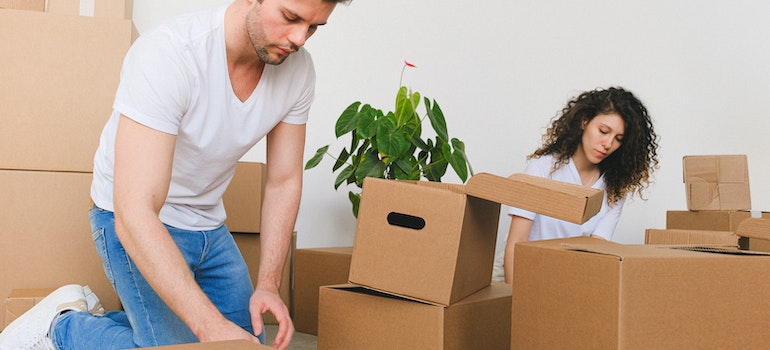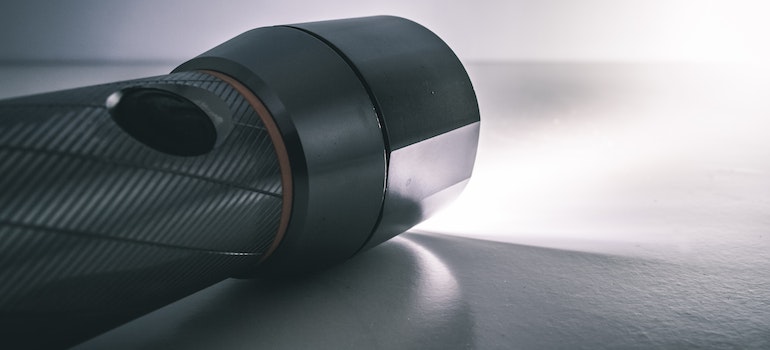We all know that moving gets hectic. And in that hectic mess, it’s easy to forget certain tasks and overlook things. One thing people often overlook is checking for damages after a move. Of course, damages can be reduced if you find the best movers after reading Verified Movers reviews. However, sometimes, accidents happen, and it’s important to check for them as soon as possible, especially during long complicated moves. That is why we will discuss today the importance of checking for these damages after a move. You’ll learn how you can do it strategically and what to do to protect your belongings.
Everything Starts With Packing
Preventing damages after a move all starts before and with packing. Before you embark on your exciting moving journey, take the time to document the condition of your belongings. Do this step before packing, of course. By creating a comprehensive inventory and capturing photographs, you establish an evidence-based starting point. Organize your inventory list meticulously, ensuring quick access throughout the move.

If you are using packing services, then the movers would be responsible for any damages made during transportation or packing. However, when you pack your items yourself, unless the damages that occur are clearly the fault of the movers, usually you would be responsible for any damages that happen due to improper packing techniques. That is why you should pay proper attention during packing and note any existing damages to ensure that no new ones arise.
Delving Into Details When Checking for Damages After a Move
Upon arrival at your new home, it is of utmost importance to prioritize the meticulous process of unpacking and inspecting your belongings. This critical step enables you to swiftly uncover any damages or missing items that may have occurred during the move. To ensure a thorough assessment, it is essential to pay close attention to detail and approach each item with care. By doing so, you can mitigate the risk of overlooking even the minutest concerns that could have a significant impact on the condition and value of your possessions.
- Examine each item meticulously: Take the time to inspect every item as you unpack it carefully. Look for visible damages such as scratches, dents, or cracks, and note them down promptly.
- Check for missing items: Compare your inventory list with the items you unpack to ensure that nothing is misplaced or lost during the move.
- Utilize proper lighting: Adequate lighting is essential for spotting even the subtlest damages. Make use of natural light or additional light sources to ensure a comprehensive inspection.
- Document damages with photographs: Take clear and detailed photographs of any damages you discover. These visual records will serve as valuable evidence during the reporting and resolution process.
- Keep a detailed record: Maintain a detailed log of damages, including descriptions, locations, and any relevant information. This record will aid in effective communication with the moving company and insurance provider.
Unveiling the obvious and identifying visible damages after a move
During the moving process, your furniture, appliances, and other items are susceptible to visible damage. Scratches, dents, or cracks may occur due to mishandling or rough transportation. It’s essential to know how to identify these damages and meticulously document them.
Thoroughly examine each item, scrutinizing surfaces, corners, and edges. Be vigilant in noting down any visible damages, including their location and severity. If you are moving, for example, to Vermont, make sure to contact long distance movers Vermont, even in cases where there are no damages to your belongings. Leaving a good review after checking for damages after a move is one way you can help other customers like yourself find reliable movers.
Checking for hidden damages: beneath the surface
While visible damages catch the eye, hidden damages often lurk beneath the surface. Drawers, furniture interiors, and electronic devices may conceal unexpected issues. In some cases, if there is bad weather during moving, you should check all your electronics for water damage. Systematically conduct thorough checks, utilizing flashlights or mirrors to uncover concealed damages. By proactively detecting hidden damages, you can address them promptly, minimizing potential long-term complications.

Effective Communication Is the Key When Reporting to the Moving Company
Documenting and reporting damages to your moving company is pivotal for resolving issues efficiently. Leverage your inventory list and pre-move photographs as compelling evidence during communication. Clearly articulate the damages, providing specific details and supporting documentation. Timely reporting and meticulous record-keeping foster a smoother resolution process.
Understanding how insurance coverage works
Protecting your belongings during a move requires a comprehensive understanding of your insurance coverage options. Familiarize yourself with different insurance policies available for moving, ranging from basic liability coverage to comprehensive full-value protection
When it comes to moving insurance options, there are several choices to consider. Full Value Protection provides comprehensive coverage, while Limited Liability offers minimal coverage at 60 cents per pound per article. Third-Party Insurance typically covers up to $18 per pound per article, but rates should be confirmed in advance. All Risk Insurance offers excellent coverage based on declared values. If you are moving to Montana, for example, you can opt for All Risk insurance, with rates can range from $0.50 to $1.50 per $100 of coverage. Make sure to check with Montana long distance moving companies what type of insurance they offer and choose the best option.
Resolving damages and seeking compensation
When damages occur during a move, taking proactive steps toward seeking compensation is vital. Establish clear and open lines of communication with your moving company, supplying them with comprehensive documentation and evidence. Follow their prescribed procedures for addressing damages and engage in fair negotiations to secure appropriate compensation based on the extent of the damages and your insurance coverage.
Timeliness of reporting damages: Swift action for swifter resolution
Promptly reporting damages holds the key to expediting the resolution process. Familiarize yourself with the specific time limits and deadlines for filing claims with your moving company or insurance provider. Swift reporting is instrumental in avoiding unnecessary complications or potential denial of claims. Acting promptly ensures a higher likelihood of a favorable outcome.

For example, if you move to a state like Rhode Island, you can file a consumer complaint with the attorney general. Of course, sometimes this course of action won’t be necessary since most Rhode Island long distance moving companies, are always willing to help you with resolving any issues as they arise.
Protecting Your Belongings for a Seamless Relocation
Your belongings deserve no less than the utmost care and protection. That is why diligently checking for damages after a move is imperative to protect your cherished belongings. By documenting their pre-move condition, inspecting meticulously, identifying visible and hidden damages, reporting promptly, comprehending insurance coverage, seeking fair compensation, implementing preventive measures, and selecting trustworthy movers, you ensure maximum protection for your possessions. Prioritize their safety and follow this comprehensive guide to enjoy a seamless transition into your new home.



